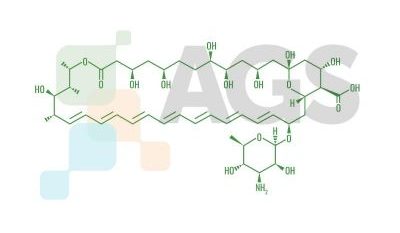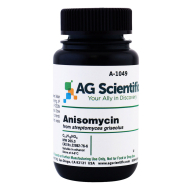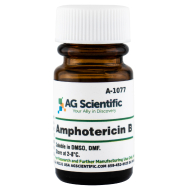Anti-fungal drugs play an important role in treating serious medical conditions. These drugs are used to treat primary fungal infections as well as secondary infections. Anti-fungal drugs can be administered through different channels and play a key role in keeping cancer patients and organ donors healthy. Let's examine how these drugs work and why continued research and development is so important.
How Do Anti-Fungal Drugs Work?
Fungal infections can be particularly hardy and difficult to treat. Many types of fungus reproduce via airborne spores. As a result, fungal infections often begin in the lungs or where the spores land on exposed skin. There are a variety of anti-fungal medications that can be used to treat such an outbreak. Most anti-fungal medications treat an infection through one of two strategies. The first is attacking the cell walls of the fungus, causing the cells to rupture and die. The second is to inhibit fungal cells from reproducing and further spreading. Anti-fungal medications come in different forms and are administered through several channels.Topical Anti-Fungal Drugs
Creams, gels, or aerosols that are applied directly to the affected area. Topical treatments are typically applied to the skin, nails, or hair.Oral Anti-Fungal Drugs
Tablets, capsules, or liquid medications that can be ingested. These drugs are used to treat more serious fungal infections.Intravenous Anti-Fungal Drugs
An injection that will spread the medication via the bloodstream.Popular Anti-Fungals
Anti-fungal medications treat infections that can be particularly dangerous, especially for those with compromised immune systems. Here are some of the most common types of medications:Wortmannin
Wortmannin is a cell-permeable steroid metabolite of the Penicillium funiculosum fungi. It binds to and inhibits phosphatidylinositol 3-kinase (PI-3), mitogen-activated protein kinase(MAPK), and myosin light-chain kinase (MLCK). Wortmannin can also prevent repair of DNA double-strand breaks within irradiated human cells.
Amphotericin B
Amphotericin B is an anti-fungal antibiotic that originates from Streptomyces nodosus bacteria. It is used to prevent contamination from fungi, viruses, and protozoa and can be obtained from reputable chemical vendors or biomedical suppliers. Amphotericin B binds to sterols and disrupts osmotic integrity of fungal membranes, causing them to rupture. It is often used to treat aspergillosis, blastomycosis, candidiasis, coccidioidomycosis, and cryptococcosis. Amphotericin B is administered intravenously and is so effective that it is listed on the World Health Organization's "List of Essential Medicines".
Aninsomycin
Aninsomycin is an antibiotic produced by Streptomyces griseolus. Also known as flagecidin, it inhibits peptidyl transferase and interferes with protein and DNA synthesis in certain eukaryotic cells. While Aninsomycin is a highly effective protein synthesis inhibitor, it is also used to activate kinase cascades in mammalian cells. There is some research suggesting that Aninsomycin has anti-cancer properties but it is not clinically used in cancer treatment. AG Scientific is a leading supplier of Aninsomycin as a diagnostic reagent.
Further Development of Anti-Fungal Drugs
Most people view fungal infections as a mild irritation. That makes sense because some of the most common fungal infections are conditions like Athlete's Foot. These types of fungal infections can cause discomfort but are easily treated. The truth is that fungal infections kill 1.5 million people each year. That's on par with diseases like Tuberculosis and HIV.The majority of those worldwide deaths are attributed to just a handful of dangerous fungi. Cryptococcus, Candida, Aspergillus, and Pneumocystis collectively are responsible for 90% of those deaths. Candida is a relatively common type of fungus but can be very dangerous when the host has a weakened immune system. Patients with AIDS, recent recipients of organ transplants, and cancer patients undergoing chemotherapy are vulnerable to many types of fungus that are otherwise harmless. This is especially true in the developing world, where hospitals don't meet the same cleanliness standards as in the West.
Further research and development of anti-fungal drugs is critical to reduce mortality rates, especially in those being treated for cancer, HIV, or other diseases. There is a second and even more pressing reason why further research is vital. Certain types of fungi are showing resistance to common anti-fungal medications. This raises mortality risks in humans but also could threaten the global food supply.
Fungal pathogens are responsible for blights that can devastate crops as well as kill farm animals. New strains of drug-resistant fungi could potentially lower crop yields and lead to serious food shortages. Fungal infections range from minor irritations like Athlete's Foot to critical health issues that can ultimately be fatal. Anti-fungal drugs are a crucial part of the healthcare arsenal to lower mortality rates from primary and secondary fungal infections. The rise of drug-resistant fungi underscores the importance of continued drug research and development. With enough resources and scientific manpower, deaths from fungal infections could one day be eliminated completely.
Additional Reading
- Amphotericin B for Viral Disease Research
- Tunicamycin: ER Stress Inducer
- What Can Be Done to Fight Antibiotic Resistance?


